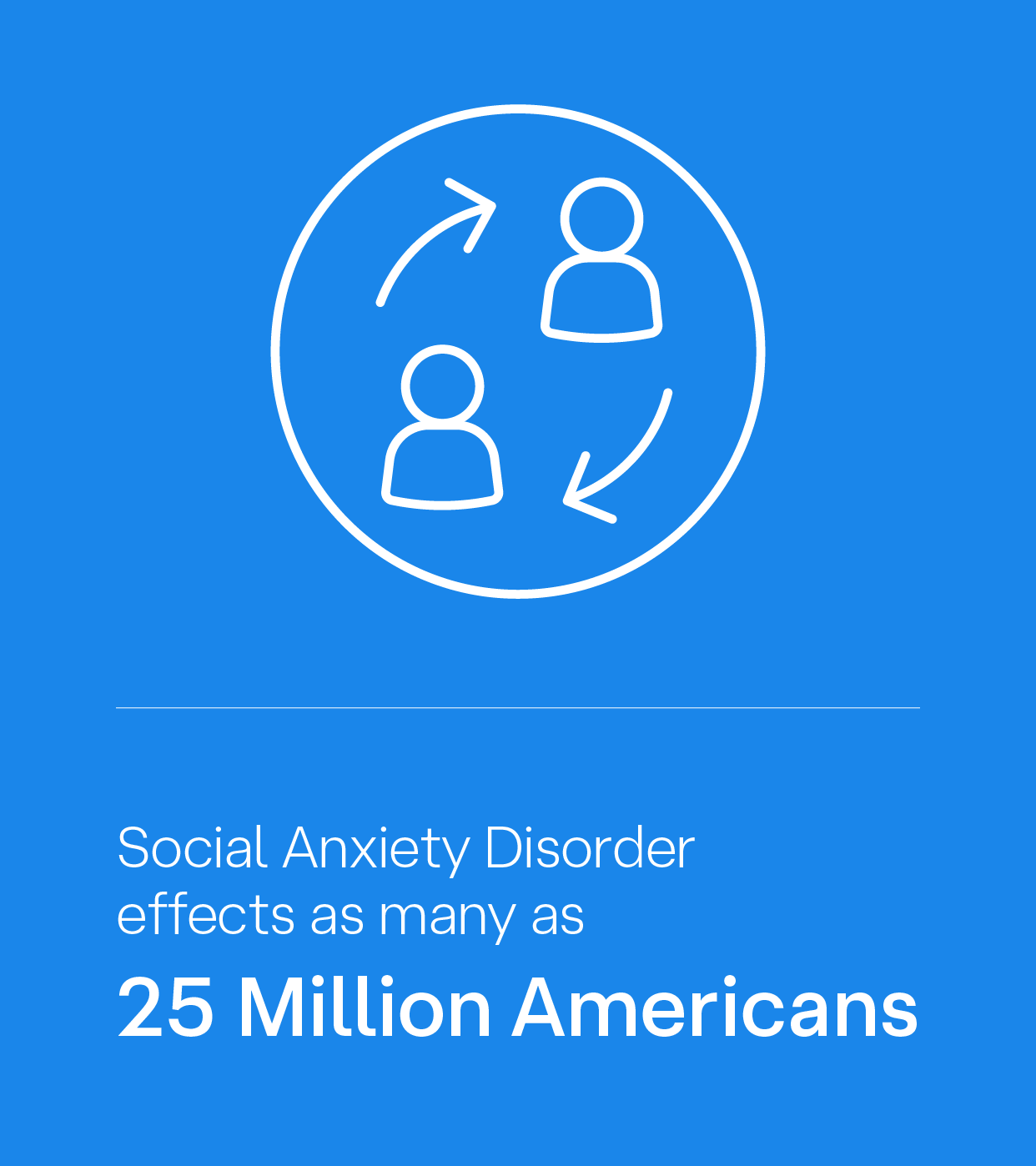Social Anxiety Disorder
Based on the 2021 National Health and Wellness Survey, social anxiety disorder (SAD) affects over 25 million Americans, with onset typically in the mid-teens or earlier, and is diagnosed slightly more frequently in females than males. SAD can be viewed as a series of acute, socially stressful events in which patients exhibit excessive fear of embarrassment, humiliation, scrutiny, evaluation, or rejection by others1. The avoidance, fear, or anxious anticipation of these situations interferes significantly with the person’s daily routine, having a marked impact on occupational functioning and social life. The disorder has a lifetime prevalence estimated at up to 12%, with onset typically in the mid-teens or earlier, and is diagnosed slightly more frequently in females than males. In the absence of social or performance events, generally, individuals with SAD are asymptomatic. Without treatment, SAD can last for many years or a lifetime and lead to avoidance and opportunity costs that can significantly impact a person's employment, social activities, and relationships, and be very disruptive to overall quality of life.
Social anxiety disorder typically does not resolve naturally, oftentimes leading to alcohol use disorder and major depressive disorder as sequalae2. A key psychotherapy mechanism by which individuals with SAD overcome this condition, or lessen their symptoms, is believed to be by exposing themselves to feared or avoided situations. This is the basis of cognitive-behavioral treatment (CBT) for SAD3. However, it is difficult for most individuals with SAD to even consider entering stressful, anxiety-provoking social situations, preventing initiation and gradual increase in exposure to stress, which is necessary for successful CBT.
There is a small number of chronic oral antidepressant drugs (ADs) approved by the FDA specifically for treatment of SAD. These FDA-approved chronic oral ADs have slow onset of effect (often many weeks or months) and significant side effects that may make them inadequate or inappropriate treatment alternatives for many individuals affected by acute SAD episodes.
While not FDA-approved for treatment of SAD, benzodiazepines, often referred to as “benzos,” and beta blockers are prescribed on an off-label basis by psychiatrists and other physicians to individuals with SAD. Benzodiazepines have a rapid-onset effect by potentiating GABA-A and slowing the nervous system to induce a calming effect that can last up to twelve hours. However, the safety concerns, including risk of abuse and misuse, and side effects of benzodiazepines, many of which are similar to the side effects of alcohol, also can appear rapidly. Due to the risk profile of benzodiazepines, in September 2020 the FDA issued an update to its 2016 Drug Safety Communication requiring that benzodiazepines display a “black box” label on bottles to warn against their potential for dangerous interactions with opioids, as well as potential risk of abuse, misuse, overuse, and addiction.
Vistagen’s Innovation:
Fasedienol has potential as a rapid-onset nasal spray for the acute treatment of anxiety in adults with SAD. When administered intranasally in microgram doses, fasedienol activates receptors of peripheral nasal chemosensory neurons connected to subsets of neurons in the olfactory bulbs that, in turn, connect to neurons in the limbic amygdala involved in the pathophysiology of SAD and potentially other anxiety and mood disorders. Vistagen believes fasedienol has the potential to achieve rapid-onset anti-anxiety effects with significantly reduced risks of side effects and other safety concerns, such as potential drug-drug interactions, abuse, misuse, and addiction, associated with certain other systemic pharmaceuticals that act directly on neurons in the brain and are sometimes prescribed for anxiety disorders.
To complement the positive topline results from PALISADE-2, Vistagen is preparing to launch two similar Phase 3 clinical trials in 2024, PALISADE-3 in the first half of 2024 and PALISADE-4 in the second half of 2024.
The FDA has granted Fast Track designation for fasedienol as a potential treatment for the treatment of anxiety symptoms in adults with SAD.
1 Liebowitz, Gorman, Fyer, & Klein, 1985
2 Oliveira LM, 2018
3 Juster & Heimberg, 1995



